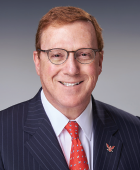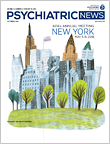I look forward to spring each year, not just because of the pleasant change in the seasons, but also because springtime marks one of the best opportunities of the year to meet with colleagues and friends from not only all over the United States but also, as someone who came from South Africa, from all over the world.
The APA Annual Meeting is the premier psychiatric event of the year. It gives those who have dedicated their lives to caring for people with mental illness and shaping the future of psychiatry a chance to come together under one roof for five days; exchange their research, knowledge, and experience; and work together toward a better world for our patients and our profession. The Annual Meeting is a tremendous undertaking in which virtually every member of the APA administration plays a role.
Years of planning experience go into each meeting, with locations for our meeting being scouted and booked up to 10 years in advance. This is necessary to ensure that we can secure a space that can accommodate all of our attendees.
APA’s Meetings and Conventions staff are our resident logistical wizards who are responsible not only for booking the space where the meeting occurs, but also making sure adequate accommodations are available for our attendees. At an average meeting, between 25 and 35 hotels are contracted to obtain around 5,000 rooms on peak nights to house meeting attendees, exhibitors, and members of the APA administration.
While networking opportunities abound at the Annual Meeting, the real draw is in the sessions and special events that make up the meeting. APA’s Division of Education works side by side with our Scientific Program Committee (SPC) each year to curate a truly comprehensive and cutting-edge program.
The process typically begins with the selection of the meeting’s theme by the incoming president of APA and planning of special sessions connected to the theme. The process picks up speed on the very last day of each Annual Meeting, when staff of the Division of Education, Meetings Management, the Office of the CEO, and the SPC hold a “kickoff” meeting to lay out a rough outline for the coming year. By early fall, approximately 10,000 abstract submissions have been received. From that point, the SPC has approximately three weeks to complete the truly Herculean task of grading each submission and checking for conflicts.
By October, the program has been selected, and it’s up to the Education team to categorize and schedule each session. It is worth noting that all of this, from abstract review to course scheduling and space allocation, is a manual process carried out by a team of very dedicated committee members and staff, and all of it occurs in parallel with efforts such as the design and curation of the futuristic but practical Mental Health Innovation Zone. While this work is going on, our Communications team is busy marketing the event to past and potential attendees and publicizing the great events that are scheduled.
All this work is carried out with you in mind. Our goal is to make the Annual Meeting an accessible, informative, and consistently rewarding experience for our attendees each year. We’re doing that with initiatives like our
APA Meetings App, which makes navigating the content of the meeting easier than ever before. Not too long ago, the program schedule appeared in print in the Program Guide, and that was it. While the guide is still a great resource, I for one am glad for innovations like the Meetings App, which allows you, and me, to search through the massive content of the meeting and build an itinerary of lectures and events we want to attend, as well as communicate with other meeting attendees.
Coordination and collaboration at all levels of our organization are a necessity to put on a successful meeting, and I am looking forward to seeing the SPC’s and the staff’s hard work come to fruition this May. I’m certain that this year’s meeting in New York City will be one of our best yet, and I hope to see you there, and if you aren’t speeding to the next event, please say hullo! ■

